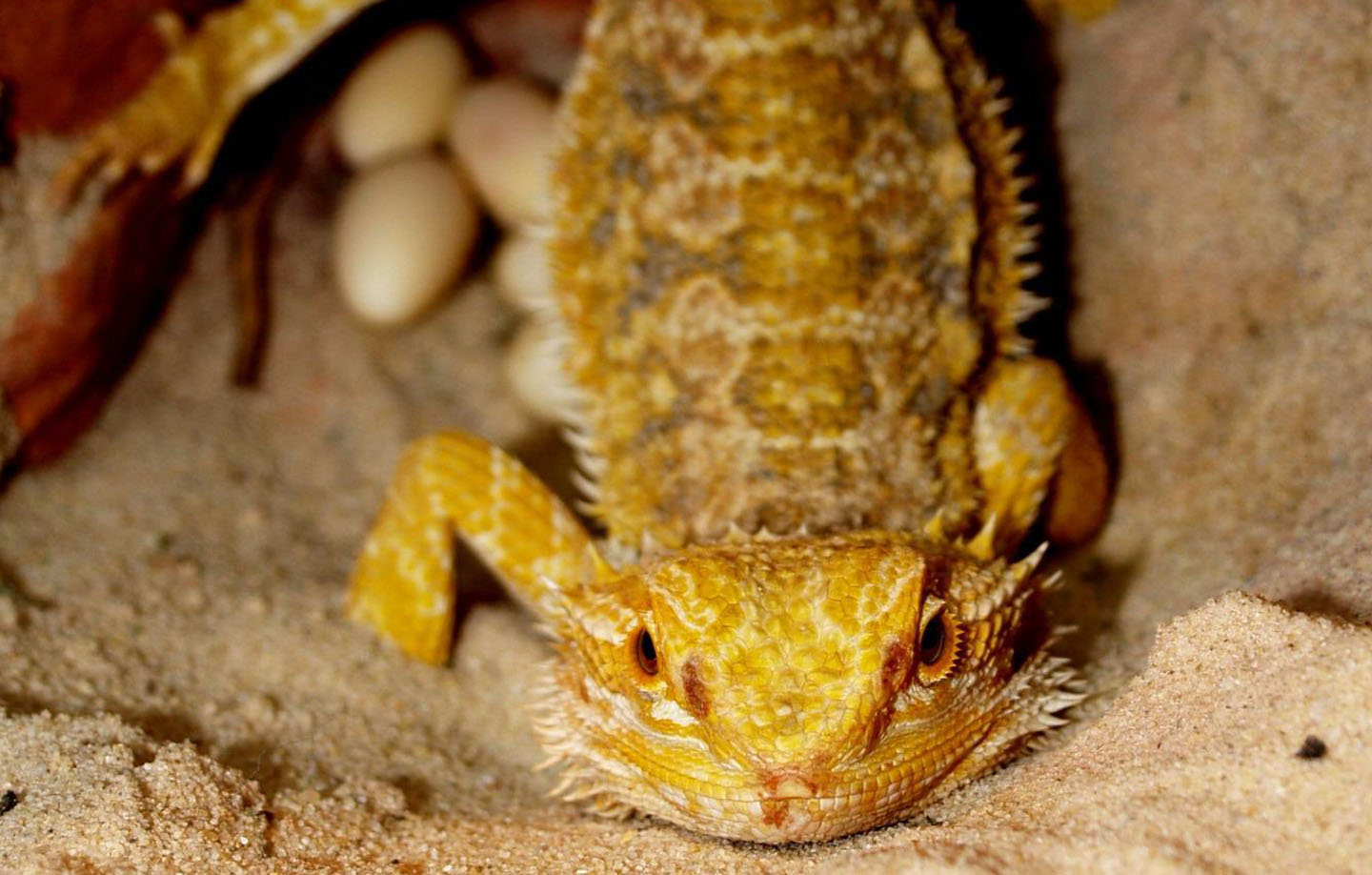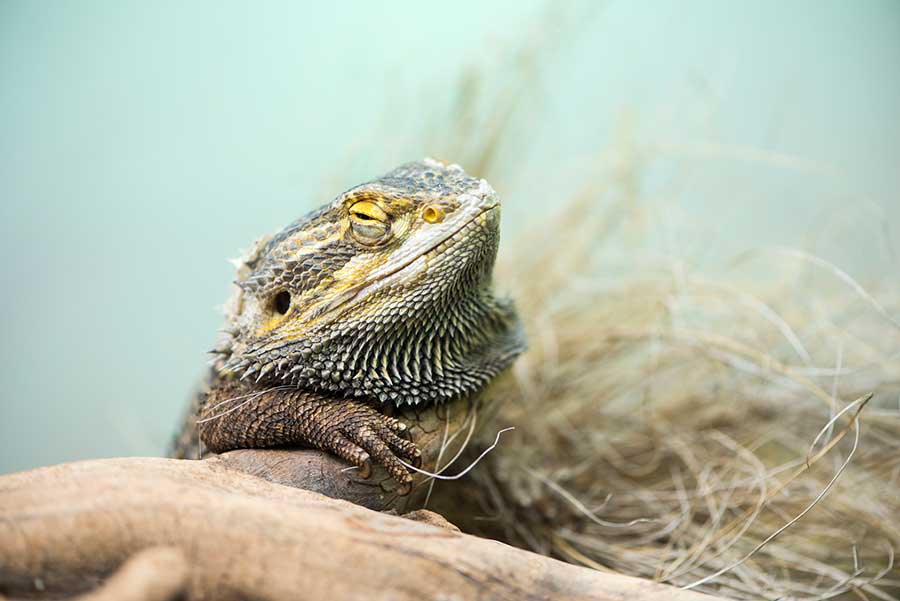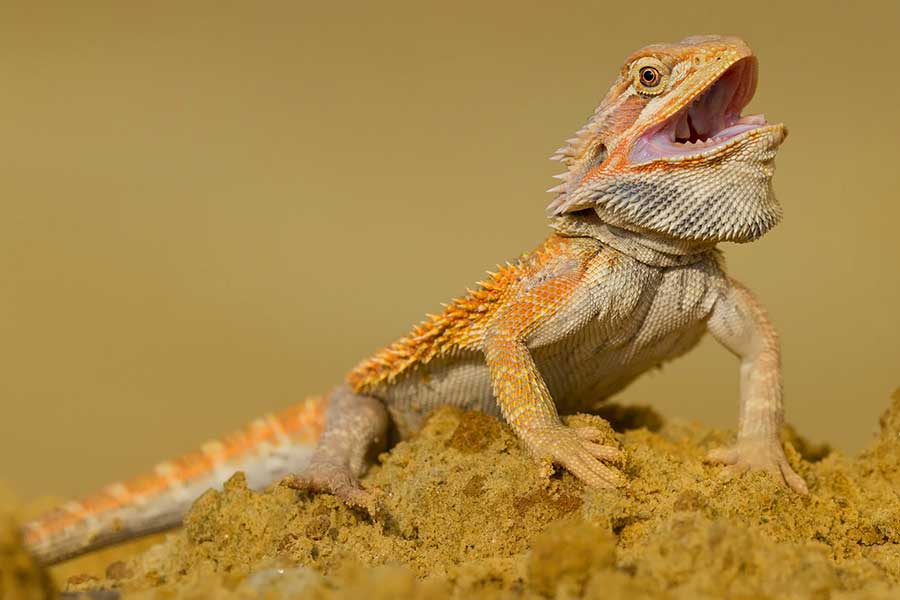
It is natural for bearded dragons to dig around their tank on occasion. Generally, digging is normal, instinctive behavior and nothing to worry about. But if you suddenly notice a change in your beardie’s digging habits, such as increased frequency or urgency, you may be worried that something might be wrong with their health.
Why does my bearded dragon scratch in the corner? It may be their natural instinct to create a cozy space but excessive scratching or signs of distress should be monitored. Remember to check temperature, humidity, and substrate for comfort.
Below, we’ll take a look at why bearded dragons dig in the wild and why you can expect this natural behavior to occur inside the tank.
We will then go through the main reasons why you might see an increase in your beardie’s digging behavior and when it is natural and when it is worth worrying about. Finally, we’ll talk about how to create a safe environment for your beardie to dig in comfortably.
Why Is My Bearded Dragon Digging In The Corner?
It is completely normal to see bearded dragons digging in the wild. They do it for a variety of reasons. When they have had enough heat and sun and need to cool down their body temperature, they might dig a cool hole to lie in. If they are laying eggs, getting ready for brumation, or hiding from predators, they will also want to dig holes and tunnels.
While your pet bearded dragon might not face predators and may have a tank with existing cool spots, it is still instinctive for them to dig. So, they might occasionally dig a hole, even if they don’t use it.
They will often, but not always, dig at the corners of their tank. This is just because the corner is a great place to get purchase for digging. Also, the walls of the tank are often cool, so they can make a hole for themselves and rest their body against the cool wall.
However, as with most instinctive behaviors, the problem is not “if” they dig, but if they have a sudden change in their digging behaviors. This could be them digging more often, more frantically, or not digging at all. Changes in normal behavior are usually one of the first signs that something is not right with your beardie.
Reasons Your Beardie Changes Their Digging Behavior
There are a variety of different reasons why your beardie might change their typical digging behavior. Some reasons are natural and nothing to worry about, while others can be cause for concern. Let’s take a look at each of them and what you should do to address them below.

Brumation
Adult beardies can enter brumation, which is a type of hibernation, during the colder months of the year. They will usually do this between November and February in the United States.
At the start of their brumation period, they might dig to create a nice hiding spot for themselves. They will then spend a lot of time in this place, as they will have reduced activity and a reduced appetite for a few months.
Even if they don’t go into full brumation, they may still instinctively feel the need to dig holes for themselves at this time of year. Providing them with a bit of extra substrate in the corners of their enclosure can help soothe their digging urges during this time.
Female Laying Eggs
If you have a female bearded dragon and she is more than about eight months old, she could be digging because she is getting ready to lay her eggs. Even when she is not quite ready to lay, the urge to dig to make a safe spot for them is already there.
Remember, even if she does not have contact with a male, she will still want to lay infertile eggs during the breeding season. This usually starts at the end of winter, around March, and continues until October or November. You can expect to see females digging frequently during this time.
Many bearded dragons get assigned the wrong gender when they are young since it can be hard even for experts to tell the difference. It can be worth taking another look at your beardie to check their gender if they do this during the mating season.
If you do suspect you have a female, make sure to include a lay box with lots of soft, moist substrate in her tank. Without one, she might fail to lay her eggs, which can cause them to become stuck and require surgical removal.
Read: Male vs Female Bearded Dragon – How to Tell the Difference.
Trying to Keep Cool
Because they are cold-blooded ectotherms, lizards don’t regulate their body temperatures internally. Instead, they seek out the sun or a cool shady spot and use those temperatures to keep their bodies at the right temperature. Essentially, they rely on their surroundings to warm and cool their bodies.
If your beardie is digging holes to curl up in, they may be struggling to find a spot in their tank that is cool enough. In this case, you likely need to lower their tank temperature slightly.
Other signs could be them spending less time in the basking spot or panting excessively. A little bit of panting is normal, as it helps them release heat, but if they do it a lot, this can be a sign they’re too hot.
Double check the temperature of your tank. Try for temperatures from 90 to 105 degrees Fahrenheit in their basking area and 75 to 85 degrees towards the cooler end of the tank. The tank should also be a bit cooler, around 70 to 75 degrees Fahrenheit, at night.
Temperatures over 105 degrees will be gradually fatal to your beardie!
Also, remember you need to adjust your heating throughout the year as external temperatures change. Keep thermometers in their tank, in both the hot and the colder spots. Make sure you use a
Stress
As well as hiding from the heat, beardies may choose to dig to hide in general, perhaps because they are feeling stressed out. A variety of factors can cause them stress, such as:
- Cohabitation/Sharing a tank with another beardie
- Loud sounds or bright lighting around the enclosure
- Other pets near the enclosure
- Heavy foot traffic around the enclosure
If one of these potential stressors is what is bothering them, you may notice additional signs of stress, such as periods of frenzied activity followed by periods of lethargy, loss of appetite, not basking, and not going to the bathroom regularly.
If their tank is too small for them and they don’t have enough space to roam naturally, this can also cause your beardie a lot of stress. They might start digging to deal with boredom and frustration.
They can also become stressed if their tank is not designed with hiding spaces for them already. Naturally, they will want to create their own through digging.
Consider making some adjustments to your bearded dragon’s enclosure and the room their enclosure is in if you notice them digging excessively due to stress.
Looking for Food
A hungry beardie will look for food, and they might start burrowing to find something to eat. While it is natural to worry about overfeeding your beardie, the truth is, they need a lot more food than you might imagine while they are young.
Baby beardies until about three months of age should be fed at least 4 to 5 times a day, and this can be reduced to around 3 times a day from 3 to 6 months. From then, until they are about a year old, they will eat about twice a day, and only when they are fully-grown adults should they eat once a day.
If you aren’t feeding them as regularly as this, then they might get hungry at several points during the day and start burrowing in search of something to eat. Try feeding them a little more regularly if you think your beardie is digging in search of food.
How to Promote Healthy Digging
If you think your beardie is digging excessively because their tank is too hot or they are not getting enough food, then you need to change your care routine to deal with the specific issue(s) that are stressing them out.

But if your beardie is just digging for natural reasons, then your responsibility as a caring parent is to make sure they have a safe environment in which to dig. This means having the right substrate for them to get their claws into.
You can find our recommendations for the best substrate materials to use on your beardie’s tank here.
The main factors to consider when choosing the right substrate are the following.
Loose Substrate
When choosing a substrate for your beardie, you need to choose between something flat like a reptile mat or a loose substrate. While reptile mats are safer for juveniles, since they can’t swallow small pieces or accidentally be hit by small pieces, they will be very unsatisfying for diggers. Older beardies that dig need a loose substrate that they can burrow into.
Alternatively, you can set up a designated “dig box” or digging area in your beardie’s enclosure if you don’t want the entire tank to be covered in loose substrate.
Avoid Toxins
Toxins, such as chemicals and dyes, in your substrate material, can easily get into your beardie’s system when they are digging. It can irritate their skin, disrupt their digestive system, and mess with their breathing. Also, choose an eco-friendly substrate that doesn’t contain any potential toxins.
Avoid Impaction
It is generally a good idea to go with a finer, softer substrate, especially if you have a digger. Digging can dislodge larger pieces of the substrate that may fly up and hit your pet and cause them injury or end up in their mouth and causing impaction later.
But, of course, with smaller, finer substrates, the individual pieces are more likely to get caught in their food and water tray, so you will probably need to clean these more regularly.
Humidity Control
Choose a substrate that will help control and maintain humidity. The ideal humidity for beardies is between 20 and 40%, and anything above 50% can be dangerous. Good quality substrates will help control humidity and not release too much extra moisture into the air.
Our top recommendations?
- Zoo Med Eco Earth Compressed Coconut Fiber Expandable Reptile Substrate
- Zoo Med Premium Repti Bark Natural Fir Reptile Bedding
- Exo Terra Coco Husk Tropical
Terrarium Reptile Substrate
FAQs About Bearded Dragon Behavior
Why is my beardie digging in the corner?
If your bearded dragon tends to focus their digging in the corner of their tank, this is usually because it is a good place to get traction for digging, and the walls of the tank are often cool. If your beardie is looking to create a cool hole to curl up in, they might want to lie against the edge of the tank.
Why is my bearded dragon scratching at the walls?
When your beardie is scratching at or trying to climb the walls of their tank (also known as “glass surfing”), this usually means that they want to get out! Assuming there is no problem inside the tank, this is usually because they are driven to mate, so they want to get out of the constraints of their tank to find a beardie friend.
When do bearded dragons brumate?
In the northern hemisphere, you can expect beardies to brumate in the winter, starting in October and November, and returning to their normal activity in around February.
The Verdict
Digging is completely normal behavior for your pet bearded dragon–as long as it doesn’t become excessive. It is instinctive for beardies to dig, so you shouldn’t be surprised to see your beardie digging in their tank. But if they suddenly start digging more often or more frantically, this can be a sign that something is wrong with their health or enclosure setup. The key is to look for changes in behavior rather than at the specific behavior.
If your beardie is digging more at the start of the brumation season or they are a female and they are digging more during the breeding season, this is probably normal. Outside of this, they might start digging because they are stressed, their tank is too hot, or they aren’t getting enough to eat. You need to analyze what else is going in with your beardie to determine which of these explanations is the most likely.
Also, bear in mind if you do happen to have a beardie that likes to dig, you need to give them a safe environment to dig in, so make sure you choose the right substrate that is soft and comfortable and doesn’t alter the humidity of the enclosure too much.
Do you have recommendations for dealing with beardies that love to dig? Share them with the community in the comments section below.

